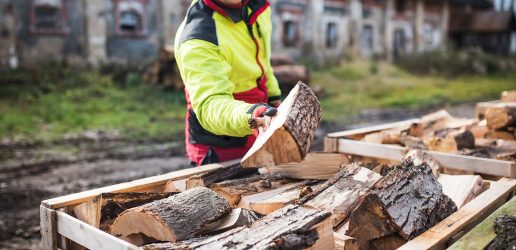Aiming to reverse a nationwide depletion of habitats, and seeking to achieve net zero by 2050, the UK government is using a range of policy initiatives and programmes to invest in our land and water-based environments. To make sure these actions are effective, it’s essential that decision-makers have accurate and up-to-date evidence.
The Natural Capital and Ecosystem Assessment (NCEA) is a Defra-led science and innovation programme, working across both land and water environments. It collects data on the extent, condition and change over time of England’s ecosystems and natural capital and quantifies the benefits to society they provide. Forest Research is at the heart of the programme, collecting data on trees, woodlands and forest habitats, building software solutions and delivering mapping products.
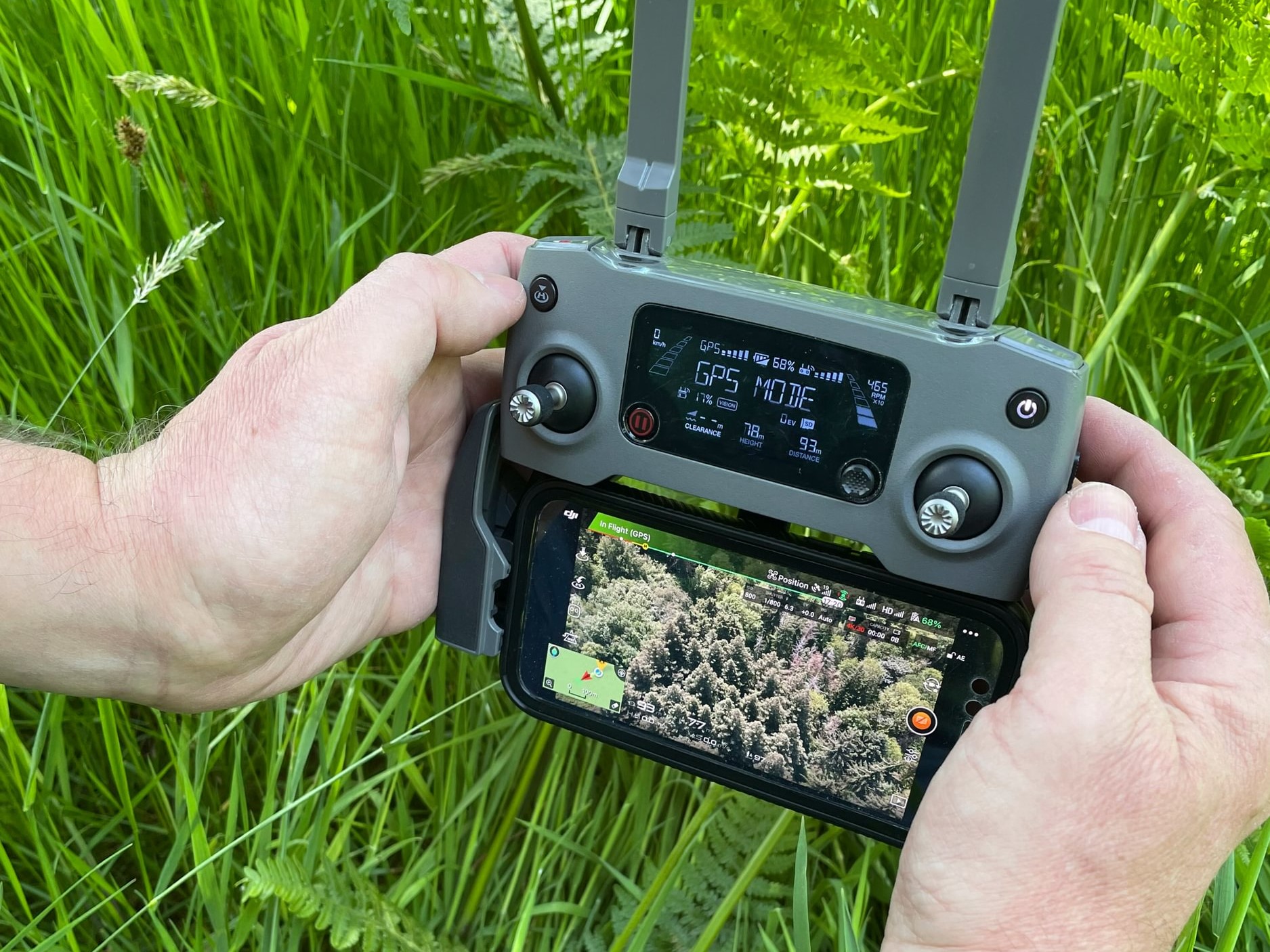
Matt Wilkinson is the NCEA Programme Manager at Forest Research. Here, he explains the scale and significance of the NCEA programme and the innovation that is being fostered.
“NCEA is a flagship research and development programme sitting at the heart of the government’s major portfolio of projects. We are working with a range of other Defra arms-length bodies (ALBs) such as Natural England, the Environment Agency, and the Joint Nature Conservation Committee to provide a baseline assessment of the natural capital state of England’s habitats. The programme also aims to improve our understanding of why those habitats are important and the scale of the benefits that they provide.
“NCEA describes the environmental, social and economic value of the terrestrial and aquatic natural environments. Using a range of monitoring techniques, we’re assessing the state of the natural environment across the whole of England. So, ultimately, we can build a set of natural capital accounts. If we’ve got a value, whether that’s a monetary value or an intrinsic value to society, then it facilitates better decision-making by government and policymakers.
“We’re providing the evidence that will help support sustainable land use management, including forest practice in the future. We’re assessing a whole range of natural and managed ecosystems to inform different aspects of land use policy.
“It’s predominantly driven by the rural environment, but there are certainly places on the urban and peri-urban fringe that we’re also looking at. Anywhere where there are ecosystem services being delivered by trees, woodlands and green spaces. So, for example, trees outside woodland is an important focus for the programme. The map and survey work that Forest Research is leading includes a lot of urban squares, where we’re measuring the contribution of trees that exist outside woodland.
“I’ve spent most of my career as a research scientist,” says Matt Wilkinson. “In science, we think a lot about research impacts, focusing on maximising the impact that our research generates. I took this job because through the NCEA, we can use science to inform the natural capital approach and make better-informed decisions, helping to ensure that our science has real world impact.
“It’s not about devaluing certain habitats, but it is about prioritising investment to get the maximum benefit for nature. It’s about using our spaces better, achieving net gains in biodiversity, understanding carbon emissions and how we reduce them.
“The programme started with a few successful small-scale pilots in 2020 and 2021,” Matt Wilkinson says. “The main programme followed in April 2022 and runs through to March 2025, but we are currently looking to extend it further. The total amount that HM Treasury committed over the whole programme between 2022 and 2025 is £140 million. In the current financial year, Forest Research received just under £5 million. It’s a big programme!
“The programme is reliant on the skills and expertise of our staff, with scientists, surveyors, technical specialists and programme managers across the whole of Forest Research involved. Much of the work is concentrated in the National Forest Inventory (NFI) team, and so a large part of our survey work takes place within the NFI programme.
“Certainly, for the trees outside woodland survey programme, we took the existing NFI infrastructure and transferred that across to the trees outside woodland work package, so that it runs parallel with the NFI. Much of the large scale environmental monitoring is delivered by our scientists in other science centres.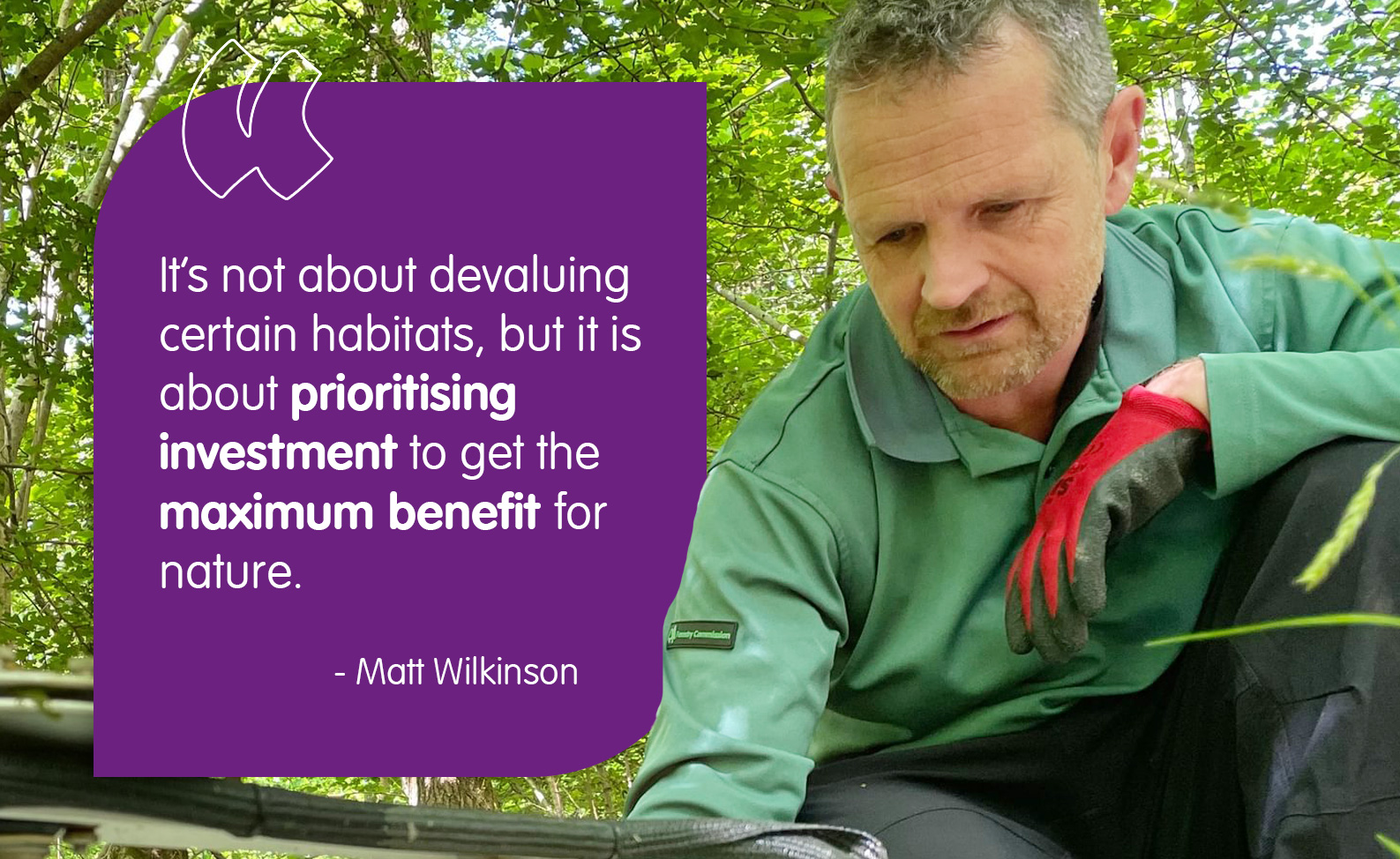
“A large proportion of the important field work we’re doing, is delivered by FR’s Field Data Services team and we’ve also got David Avenell’s and Helen Cole’s teams working on some major pieces of software and IT development, where FR is producing and supporting software packages for other ALBs.
“Technology is a really important part of NCEA,” Matt Wilkinson continues. “In terms of trying to find the most efficient ways of doing these measurements at scale. We’re exploring some cutting-edge science, particularly in terms of the ecological acoustic work and use of environmental DNA.
“I’m mindful that, going forward, we must embrace new technologies to reduce the cost of these big field surveys. We’re already looking at how we can use things like machine learning, AI and sensors on drones to improve our processes. If there’s a technology that can improve our efficiency, can do things better, is safer, quicker and cheaper, we should be looking at it.
“We’ve got a core programme of 15 or so individual research and development projects, but we’ve also had some smaller bolt-on projects funded through NCEA. For example, we’ve been doing some exciting work using harvester head information, a useful way of getting high quality forest inventory data.
“There are several other projects that illustrate the innovation at the heart of the NCEA programme. First, there’s the Earth observation-derived trees outside woodland map. Here we’re providing accurate information about the size, distribution and composition of trees outside woodlands. Matt Wilkinson adds, “this map covers any areas of woodland that wouldn’t come under the National Forest Inventory.
“We’re mapping those using Earth observation techniques, principally aerial LiDAR, to create a trees outside woodland map from those remotely-sensed data. By combining the outputs from that map with the National Forest inventory, it gives us a description of what England’s actual tree cover is, filling in a previous large knowledge gap, one of the innovative, exciting projects backed up by a huge field survey.
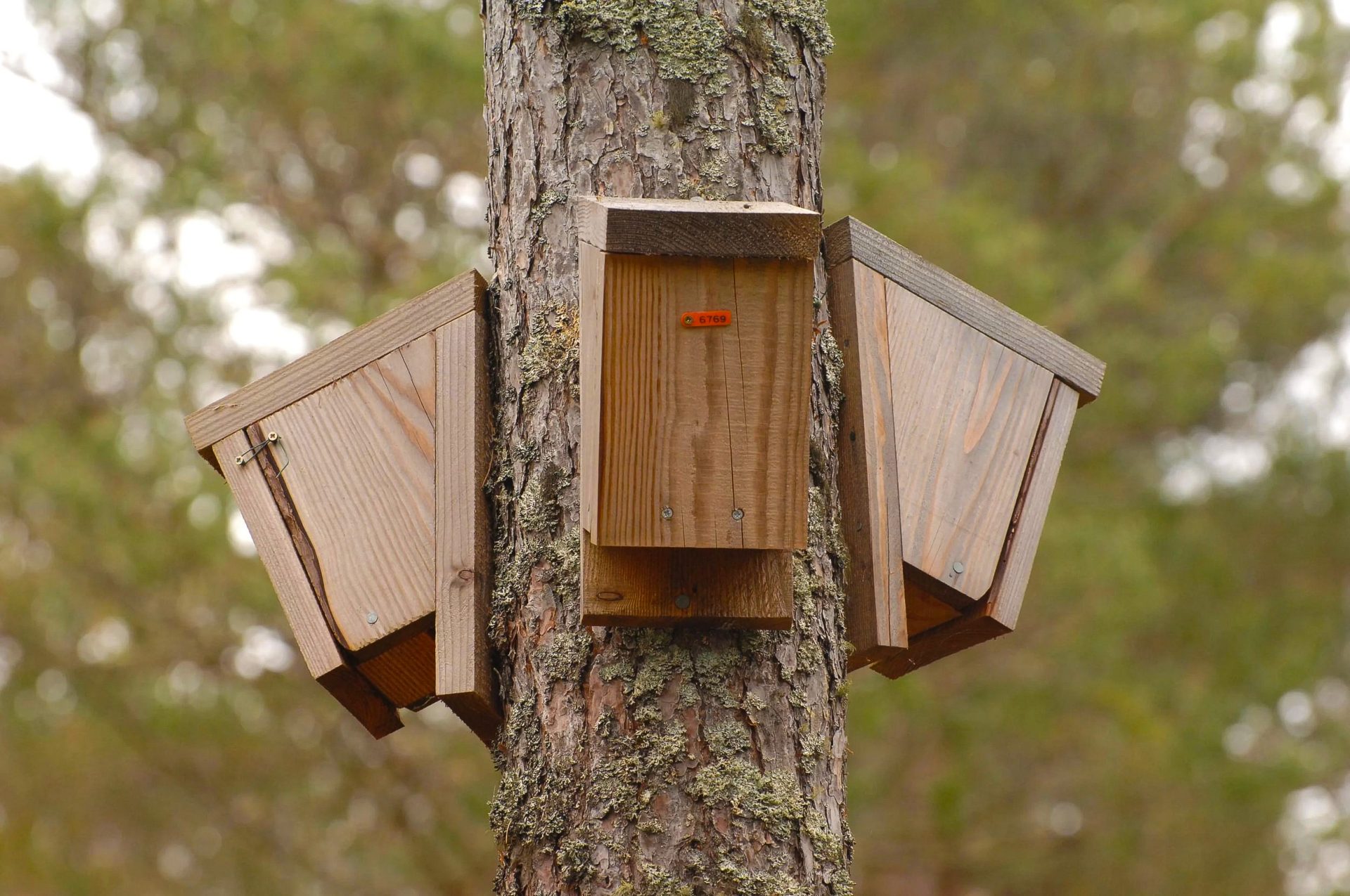
“There’s exciting innovation that’s going on in how we collect field data too. Over the cycle of the programme and, in collaboration with the Bat Conservation Trust, we’ll complete the largest survey of bats that’s ever been undertaken in England’s woodlands. Even at an early stage, we’re already finding species outside their expected ranges.
“That data is gathered through acoustic monitoring. We’re putting recording devices out in the field that monitor the frequencies bats emit. Different bat species emit different frequencies. We’ve surveyed around 210 sites in 2024, which is a fantastic effort by the field surveyors and the Bat Conservation Trust and plan to do the same in 2025.
“We’re also looking to develop an autonomous acoustic sensor. At the moment, we have to send somebody out every few days to change the batteries and download the data. But with one of the programmes we’re funding, we’re looking to develop an autonomous sensor that will do the processing in the field in real time, what we call ‘edge processing’, there’s no sound recorded. It’s more like a sensor. It’s there, physically detecting, confirming the species and simplifying the process.
“Another cutting-edge project we’re working on is environmental DNA, led by Nadia Barsoum and Elena Vanguelova. Nadia has been looking at monitoring soil biodiversity, woodland mammals and forest canopy arthropods. These are large scale surveys, gathering huge amounts of important data on the biodiversity of different habitats.
Matt Wilkinson, concludes, saying, “I’m so pleased that Forest Research is right up there helping to deliver one of Defra’s key programmes. The NCEA really is a cross cutting, agency-wide programme utilising the amazing technical skills, capabilities and experience of Forest Research staff.
“It’s a fantastic honour to lead such an important programme.”
Recent News
View All news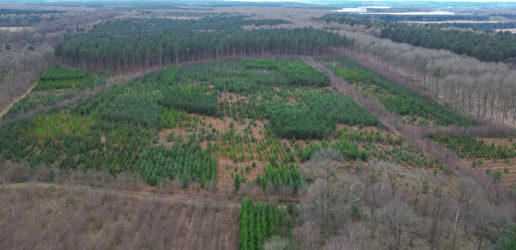
Seventeen coniferous tree species show early promise for future commercial timber production in the UK
Researchers have set up a network of nine large scale experiments across the UK to test the suitability of 17 tree species as potential alternatives for future commercial timber production.
Forest Research are looking for people involved in the harvesting, processing, transport, import, or trade of firewood in Scotland to complete an important survey.

New guide to help local authorities conduct a people survey on the social value of their treescapes
A new step-by-step guide to help local authorities, charities and civic societies carry out a people survey to understand social and cultural values related to trees in their area, is now available.

Seventeen coniferous tree species show early promise for future commercial timber production in the UK
Researchers have set up a network of nine large scale experiments across the UK to test the suitability of 17 tree species as potential alternatives for future commercial timber production.
Forest Research are looking for people involved in the harvesting, processing, transport, import, or trade of firewood in Scotland to complete an important survey.

New guide to help local authorities conduct a people survey on the social value of their treescapes
A new step-by-step guide to help local authorities, charities and civic societies carry out a people survey to understand social and cultural values related to trees in their area, is now available.

